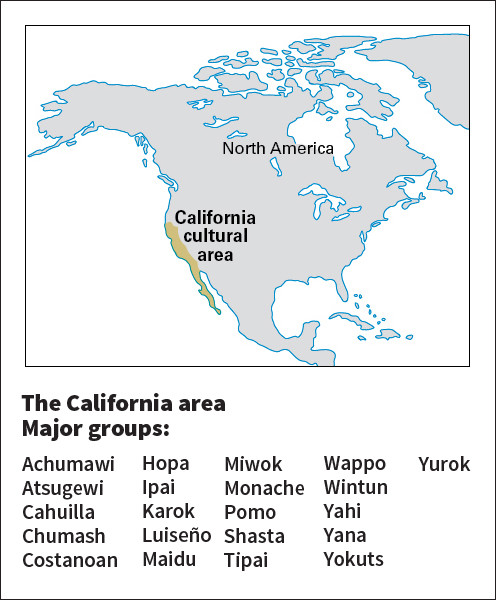Shasta are a native people of what is now northern California and southern Oregon. In the early 1800’s, from 2,000 to 3,000 Shasta lived in small settlements throughout the region. They were divided into several smaller bands. Shasta are closely related to nearby Achumawi and Atsugewi people. Mount Shasta, in northern California, is named for the Shasta.

Shasta people traditionally lived by hunting and fishing and by gathering wild plant foods. Deer, salmon, and acorns served as especially important food sources. Acorns contain a bitter substance called tannic acid, making them inedible. To remove the tannic acid, Shasta Indians ground the acorns and rinsed the acorn meal with water. They then dried the meal and stored it in pits or baskets. They baked acorn meal into a kind of bread or cake for eating.
The Shasta homeland was rich in food resources, enabling the Shasta to live in permanent settlements. They made rectangular winter homes of cedar planks that held several families. In summer, they lived in more open, temporary dwellings.
The gold rush of 1849 brought many settlers into Shasta territory. Disease and conflicts with gold miners and settlers nearly drove Shasta people into extinction. In some instances, miners organized volunteer companies to hunt down and kill Indians. In 1953, the U.S. government adopted a policy of termination as part of a national program to make Native Americans independent. Termination called for ending federal support and protection of certain reservations. Through this policy, the government abolished the Shasta reservation in 1967. Today, about 400 Shasta live in California and Oregon.
